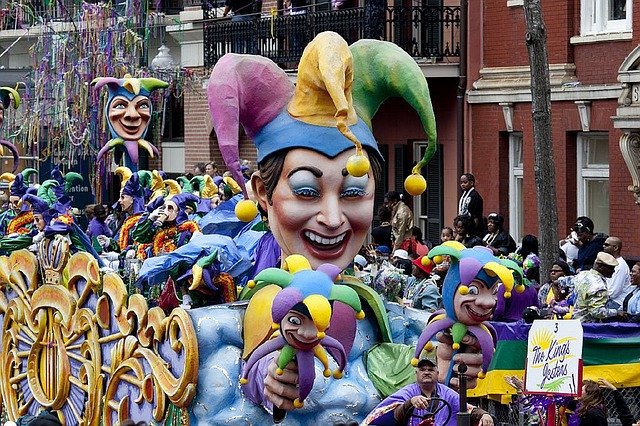Are you ready to experience the vibrant and colorful celebration of Mardi Gras in New Orleans? Get ready to immerse yourself in the rich history and lively traditions of this world-famous festival. In this beginner’s guide, we will walk you through everything you need to know to make the most of your Mardi Gras experience in the Big Easy!

What is Mardi Gras?
Mardi Gras, which translates to “Fat Tuesday” in French, is a tradition that dates back thousands of years to pagan celebrations of spring and fertility. In New Orleans, Mardi Gras has evolved into a grand celebration featuring parades, music, dancing, and lavish costumes. It is a time for revelry and indulgence before the solemn season of Lent begins.
When is Mardi Gras?
Mardi Gras takes place on the Tuesday before Ash Wednesday, which is the beginning of Lent in the Christian calendar. In New Orleans, the festivities usually begin in January and culminate on Fat Tuesday, which falls in February or March, depending on the year. The exact date of Mardi Gras changes each year, so be sure to check the calendar to plan your visit accordingly.
Where to Experience Mardi Gras in New Orleans

If you want to experience the full magic of Mardi Gras, head to New Orleans’ famous French Quarter. This historic neighborhood is the epicenter of the festival, with lively street parties, colorful parades, and lively music filling the air. Be sure to explore Bourbon Street, where you can catch beads thrown from parade floats and enjoy the festive atmosphere.
What to Expect at Mardi Gras
Mardi Gras in New Orleans is a sensory overload of sights, sounds, and tastes. From elaborate costumes and larger-than-life floats to the beat of brass bands and the smell of Cajun cuisine, every moment is a feast for the senses. Be prepared to immerse yourself in the energy and excitement of the festival, and be open to new experiences and connections with fellow revelers.
Tips for a Memorable Mardi Gras Experience
- Plan Ahead: Book your accommodations early, as hotels fill up quickly during Mardi Gras. Consider staying in a nearby neighborhood and taking public transportation to the French Quarter.
- Dress Up: Embrace the festive spirit of Mardi Gras by wearing a colorful costume or mask. Be prepared to catch beads and trinkets thrown from parade floats.
- Stay Safe: Keep an eye on your belongings and stay with a group of friends while exploring the festivities. Be cautious of overcrowded areas and know your limits when it comes to alcohol consumption.
- Explore Beyond the French Quarter: While the French Quarter is the heart of Mardi Gras, don’t be afraid to venture out and explore other neighborhoods and events throughout the city.
Mardi Gras parades

The float parades are one of the defining spectacles of Mardi Gras in New Orleans. These floats can be a year or more in the making, and represent an enormous investment of time and money on the part of those who make them.
The parades are organized by social groups known as krewes. The oldest krewes, such as Rex and Proteus, have been in existence since the 19th century. The krewes follow established routes and schedules for their parades so that visitors know where to find them.
More recently, “super krewes” have formed to hold some of the largest events that make up Mardi Gras. Each krewe names its own king and does its best to outdo the others. The traditional conclusion of Mardi Gras day itself is a “meeting of the courts” between the krewes of Rex and Comus.
To ride a float, you must be a member of the Krewe. By law, you also have to be wearing a Mardi Gras mask. Flow riders toss ‘throws’ into the crowd. Plastic beads are perhaps the most common, but you may also get doubloons, which are fake gold coins made especially for the event.
Probably the most sought-after throws are the beautiful hand-painted coconuts made by the Zulu Krewe. Safety concerns have prohibited these from being thrown from the floats, but they can be handed out. Whatever parade you go to see, make sure to bring a bag to keep all the throws you get.
Mardi Gras in New Orleans is a once-in-a-lifetime experience that will leave you with lasting memories and a deep appreciation for the city’s unique culture and heritage. Whether you’re a first-time visitor or a seasoned reveler, there is something for everyone to enjoy during this festive celebration. So grab your mask and your dancing shoes, and get ready to laissez les bon temps rouler (let the good times roll)!

I visited a few years ago. Had such a great time.